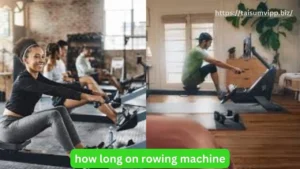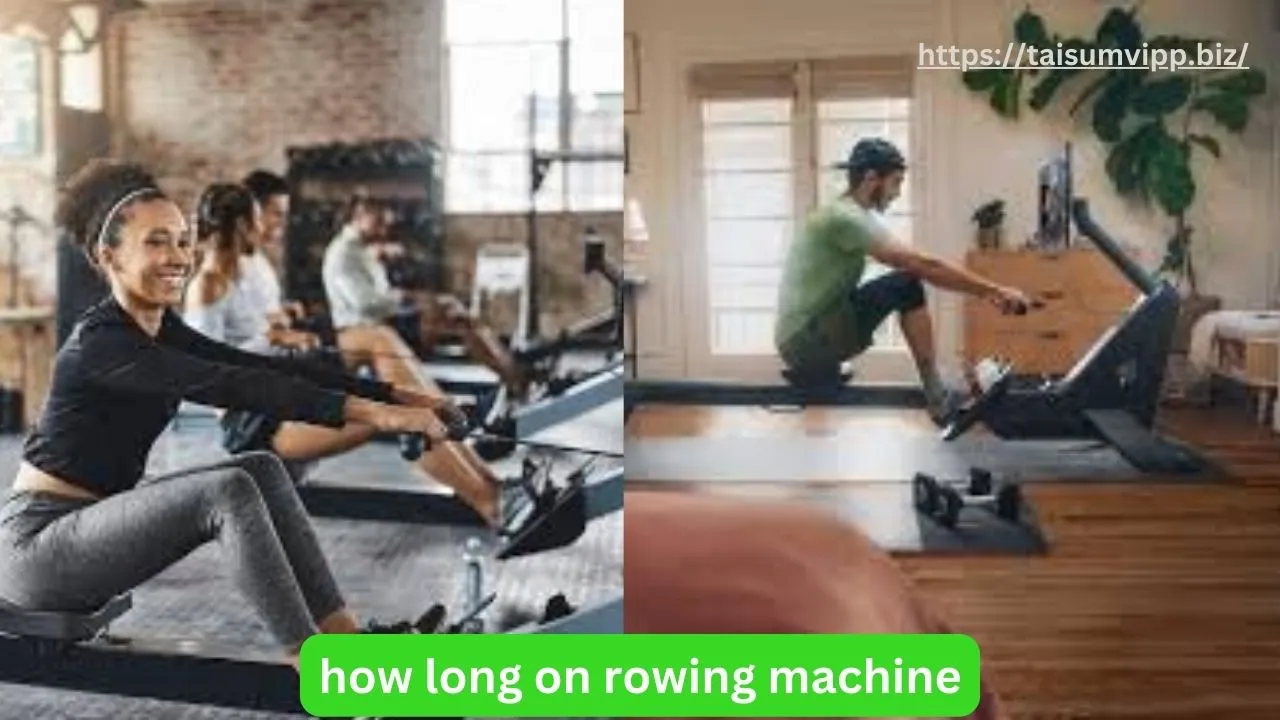Rowing machines have become increasingly popular in gyms and home fitness setups, providing an efficient, full-body workout. Understanding the optimal duration on a rowing machine can significantly enhance your fitness results. This article will explore the fundamental aspects of rowing machine workouts, methodologies to determine your ideal exercise length, benefits associated with proper rowing durations, common mistakes made by users, and crucial tips for maximizing your rowing sessions.
Understanding the Basics of Rowing Machine Workouts
Rowing machines simulate the action of rowing a boat and engage multiple muscle groups, including the legs, back, and arms. This low-impact cardiovascular exercise is suitable for individuals at various fitness levels. However, to reap the most benefits, it is essential to grasp how duration influences workout effectiveness.
The importance of setting a timeline for your workout cannot be overstated. The rowing machine can be adjusted for both time and intensity, allowing users to tailor their training according to personal fitness goals. Generally, these workouts can range from quick intervals to longer endurance sessions. This flexibility makes rowing machines an excellent choice for those looking to incorporate a versatile workout into their routine, whether they are beginners or seasoned athletes.
The Importance of Duration in Rowing Workouts
Duration plays a critical role in determining the efficiency of a rowing workout. Longer workouts may enhance endurance and cardiovascular health, while shorter, high-intensity sessions can boost metabolism and build strength. To maximize the benefits, it is crucial to strike a balance that aligns with your fitness objectives. For instance, a 20-minute steady-state rowing session can significantly improve aerobic capacity, while a 10-minute high-intensity interval training (HIIT) session can torch calories and increase post-exercise oxygen consumption, leading to greater fat loss.
Different rowing strategies suit varying goals, whether aimed at fat loss, muscle gain, or overall health improvement. Recognizing these goals and understanding how time on the machine impacts them is fundamental for achievement. Additionally, tracking your progress over time can provide valuable insights into how your body responds to different durations and intensities, allowing you to fine-tune your workouts for optimal results.
The Role of Intensity in Rowing Machine Sessions
Alongside duration, intensity greatly contributes to the effectiveness of rowing workouts. By varying the resistance and pace, users can adapt their sessions to either focus on endurance or strength training. Incorporating interval training—short bursts of high intensity followed by lower intensity—can lead to improved cardiovascular fitness and fat loss. This method not only keeps workouts engaging but also challenges the body in new ways, preventing plateaus and promoting continuous improvement.
Intensifying your session also allows for a more comprehensive workout in a shorter timefr

ame. Understanding the right balance between duration and intensity can ultimately lead to more satisfying and productive rowing experiences. Furthermore, paying attention to your form and technique during these sessions is essential. Proper posture and stroke mechanics not only enhance performance but also reduce the risk of injury, ensuring that you can enjoy the benefits of rowing for years to come. Incorporating drills that focus on technique can be an excellent way to improve your efficiency and effectiveness on the machine.
Determining Your Optimal Rowing Duration
Finding your ideal rowing duration is a personalized process influenced by various factors. While guidelines exist, individual preferences and fitness levels play significant roles in determining how long you should spend on the machine.
Factors Influencing Your Ideal Rowing Time
Fitness Level Beginners may find shorter durations more suitable until they build stamina.
Goals Training for a specific event might require longer, endurance-focused sessions.
Time Availability The amount of time you can devote to workouts significantly affects how long you spend on a rowing machine.
Health Conditions Individuals with medical concerns should consult healthcare providers before initiating long or strenuous workouts.
Ultimately, recognizing these factors will help you gauge which rowing durations will work best for you in the long run. Additionally, it’s important to consider the psychological aspect of your workouts. Enjoyment plays a crucial role in maintaining a consistent exercise routine.
If you find that longer sessions leave you feeling fatigued or disinterested, it might be beneficial to adjust your rowing duration to something more enjoyable. Finding a balance between challenge and enjoyment can lead to a more sustainable fitness journey.
How to Calculate Your Optimal Rowing Duration
To establish your optimal rowing workout, consider starting with a trial and error approach. Record your workouts and pay close attention to how you feel both during and afterward. Initially, aim for durations of:
10 15 minutes for beginners.
20 30 minutes for those with intermediate fitness levels.
30 60 minutes for advanced rowers focusing on endurance.
Adjust these times based on your energy levels and recovery. Over time, tracking this progress will allow you to refine your desired duration for maximum benefit. Incorporating variety into your rowing sessions can also enhance your experience. For instance, alternating between steady-
state rowing and interval training can not only keep your workouts fresh but also help improve your overall cardiovascular fitness. Interval training, which involves short bursts of high-intensity rowing followed by recovery periods, can be particularly effective for those looking to increase their endurance and power output.
Benefits of Optimal Duration Rowing Workouts
Engaging in rowing workouts of optimal duration can lead to numerous physical and mental benefits. These effects not only enhance overall health but can also contribute to a more positive outlook on fitness routines.
Physical Benefits of Proper Rowing Duration
Rowing is recognized as a total-body workout that can deliver:
Increased muscle strength Engaging major muscle groups helps build and tone muscles.
Improved cardiovascular health Regular rowing sessions can enhance heart efficiency and endurance.
Weight management Sustained workouts promote calorie burning, aiding in weight maintenance or loss.
Adhering to the recommended workout duration ensures that you reap these physical rewards effectively. Additionally, rowing can improve flexibility and balance, as the repetitive motion engages core muscles that stabilize the body.
This can be particularly beneficial for athletes in other sports, as improved balance translates to better performance in activities such as running or cycling. Moreover, rowing is a low-impact exercise, making it an excellent choice for individuals with joint concerns or those recovering from injuries, allowing them to build strength without excessive strain.
Mental Health Benefits of Rowing Workouts
Optimal durations in rowing workouts offer significant mental health advantages. These include:
Stress Relief Physical activity releases endorphins, helping to reduce stress and elevate mood.
Increased Focus Regular workouts can enhance mental clarity and focus, beneficial for daily tasks.
Boosted Confidence Meeting fitness goals fosters a sense of accomplishment that can translate to other life areas.
Understanding and leveraging these benefits can encourage a healthier lifestyle and a positive mindset regarding fitness. Furthermore, the rhythmic nature of rowing can have a meditative effect, allowing individuals to disconnect from daily distractions and engage in a form of mindfulness.
This mental clarity gained from the workout can lead to improved problem-solving skills and creativity, making it an ideal exercise for those looking to enhance their cognitive functions. The social aspect of rowing, whether through group classes or team competitions, also fosters a sense of community and support, which can be incredibly uplifting and motivating for participants.
Common Mistakes in Rowing Machine Workouts
Even though rowing is a generally effective workout, many users still commit common mistakes that can hinder performance and outcomes. Tackling these pitfalls is essential for achieving optimal results.

Overtraining on the Rowing Machine
Overtraining can occur when individuals spend excessive time on the rowing machine without adequate rest. This can lead to:
Fatigue and decreased performance.
Increased risk of injury.
Burnout and loss of motivation.
It is essential to periodically reassess your workout intensity and duration to avoid these setbacks.
Underestimating the Importance of Duration
Many rowers, especially beginners, may not fully appreciate how significant proper duration is in achieving fitness goals. A lack of focus on duration can lead to:
- Insufficient challenge to stimulate results.
- Reduced effectiveness of workouts.
- Discouragement when goals are not met.
To maximize your benefits, find and stick to a reasonable duration, adjusting as you progress.
Tips for Achieving Your Best Rowing Workout
Achieving optimal rowing workouts is not just about timing; it encompasses a holistic approach, including prep and recovery practices.
Pre-Workout Preparation for Rowing
Before diving into your rowing session, consider the following:
Warm-up Perform dynamic stretches to prepare your muscles.
Hydration Ensure adequate fluid intake to maintain performance.
Set Goals Define what you want to achieve during each session for better focus.
Preparing effectively sets the stage for a successful workout while reducing the risk of injury.
Post-Workout Recovery After Rowing
After your rowing session, don’t overlook recovery. Implementing practices such as:
Cool Down Gradually decrease intensity to bring your heart rate down.
Stretching Engage in static stretches to avoid muscle tightness.
Nutrition Consume a balanced meal rich in proteins and carbohydrates to replenish energy.
These post-workout strategies are vital for ensuring that you remain motivated and ready for your next rowing session.
In conclusion
finding your optimal rowing duration on the machine will enhance your fitness journey. By recognizing the importance of timing, intensity, and recovery, you can achieve sustainable results and enjoy numerous physical and mental health benefits. So prepare well, row effectively, and motivate yourself to reach your fitness goals!
